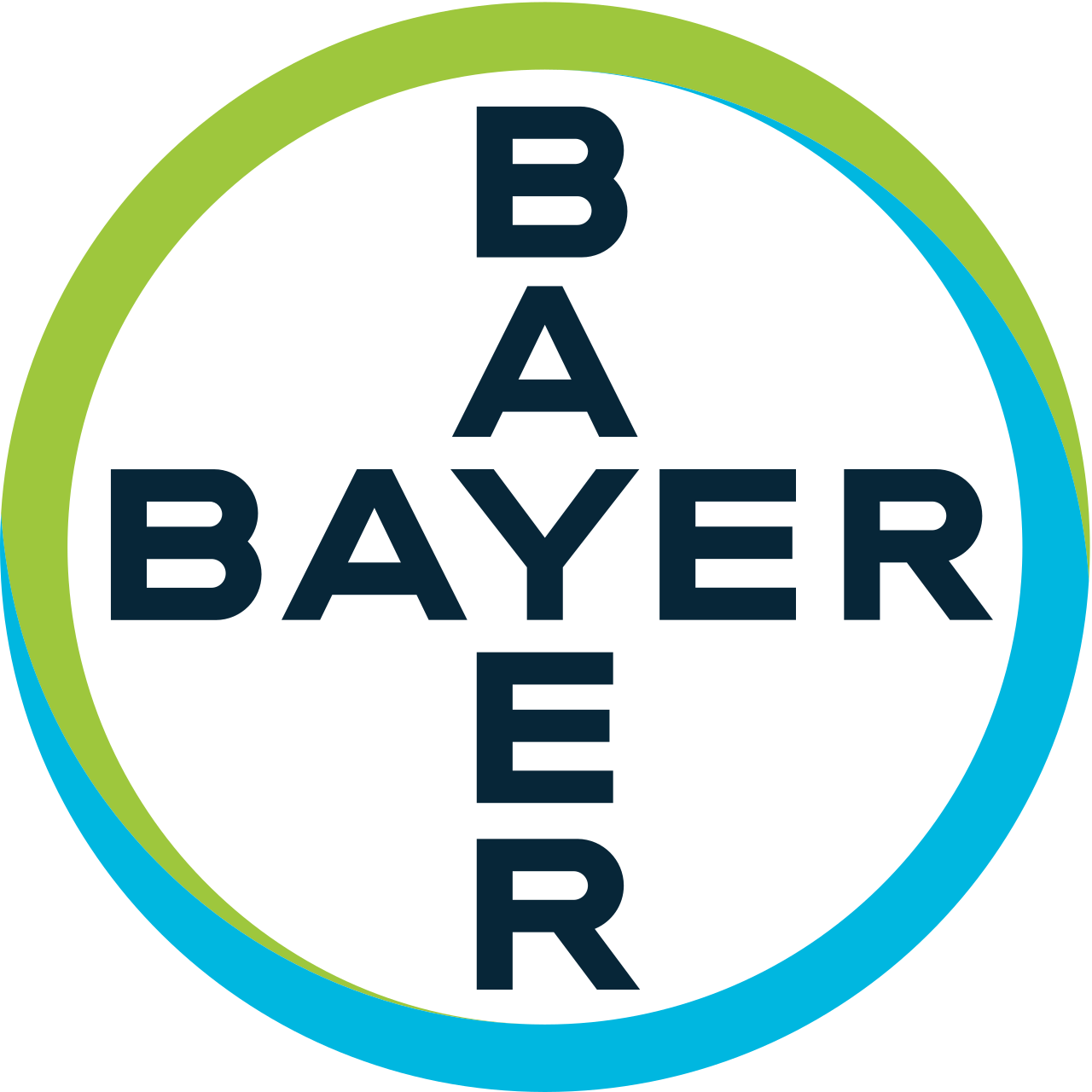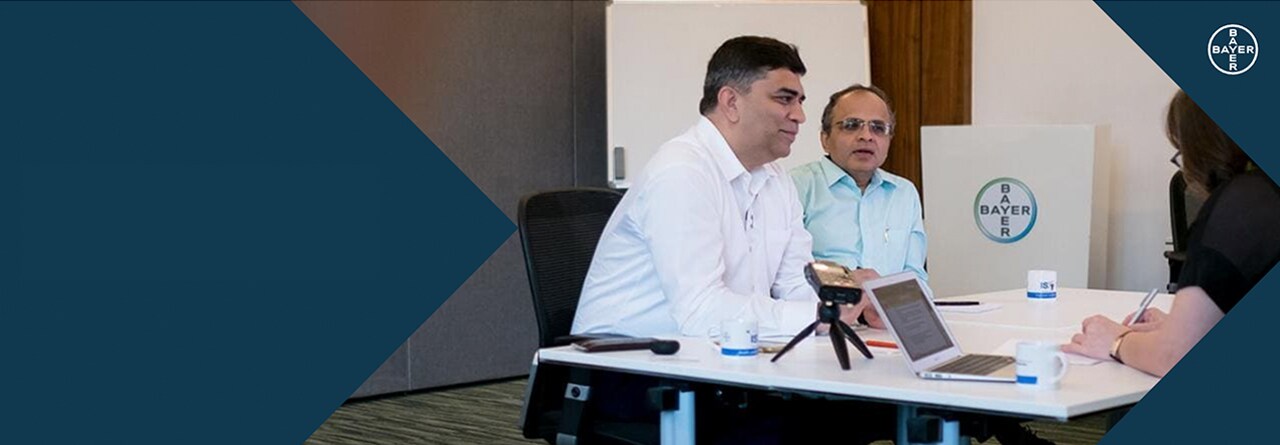Radio-Cardio Communication Improves Outcomes
Cardiologists Nitin Burkule has been referring patients to his radiology colleague Hemant Telkar for more than ten years. They talk about how they have set-up their interaction, why it has improved patient outcome, and how new professional society has grown from their cooperation.
radiology.bayer.com (rbc):. You work in different places and different set-ups. How did you set up your work to be successful in the long run?
Hemant Telkar (HT): Nitin does the initial assessment and when he feels there’s the need for a cardiac radiologist, he refers to me. We have come to understand each other over the years. If something is special, he lifts up the phone and says, “okay, I’m sending you a patient, and I have a doubt whether the diagnosis is A or B.” When I do the scan, I call him up at the end, whether we have interacted before or not. Giving him that extra understanding of my final impression helps him.

H. Telkar on the left, N. Burklule on the right.
rbc: In these cases, you would always call and talk directly?
Nitin Burkule (NB): Yes, he would.
HT: I always call and talk, because I believe the radiologist has much more to convey. A radiologist should talk to the referring doctor and support him to make a near perfect diagnosis.
rbc: You both don’t have a lot of time, so how exactly do you do that?
NB: I have radiology residents in-house, but when I need a very high imaging level with equipment that may not be available in our hospital, we resort to the private sector. The scanners are usually more advanced and we may get better information.
I also need the expertise and experience of a radiologist at that level to answer these special queries. It requires in-depth knowledge. So generally, we talk one-to-one on the line, because I can share the clinical perspective and the exact clinical query for which I want the answer. It is a two-way process of sharing and learning, which also improves the patient’s outcome.

rbc: How does the mutual trust build up?
NB: It builds up through multidisciplinary conferences, where the different cardiac imaging specialists discuss together.
HT: When you begin to work with each other, you find out rather soon whether there is a synergy between the centres. You say “okay, that centre is at least making an attempt in the right manner to try to solve my dilemma.” You need to know that the team of cardiac radiologists will try and perform to the best of their abilities on the best machinery. That’s where the connect happens.
A New Professional Society

rbc: So two experts should talk?
HT: Yes, it is very important.
NB: Communicating about the patient and the feedback that you get from each other develops trust. Not every hospital in India can have top-of-the-line machines and upgrade them every five years. So we need each other. Secondly, getting expertise in cardiac imaging is still very hard, because general radiology training does not focus on cardiology. It is not yet a developed sub-speciality, and there is no formal training.
HT: That is why we formed the Indian Association of Cardiac Imaging, which is for non-profit. We spend our own money to travel, we don’t ask the industry to pay.
rbc: Could you talk a bit more about that?
HT: Before our first forum, we booked our own tickets and travelled there. The local colleagues accommodated us, we did not ask if there was a 5-star, or a 4-star hotel. It was just two nights, but we went, because it is our passion to teach. As Nitin rightly said, the more you teach, the more you learn, and the better the community will pass it on.
rbc: When did you decide to start your own society?
HT: About seven years back.
rbc: Why?
HT: In 2000, I was the only one in the country who started doing cardiac CT on a 4-slice CT scanner. It took me three and a half to four years to come to a level where I was able to say “I think I am doing it right.” That is really too long.
Then the 16-slice scanner came, then 64 slices. That was when I realized it was time for like-minded people to come together and teach.
When I told a cardiologist back then I could see a coronary artery, they would laugh at me, because a radiologist was not supposed to know about it. Meanwhile, presentations at cardiac conferences made the cardiologists start taking us seriously. With the 64-slice scanner and robust data cardiologists see there’s a modality that can help them.
rbc: So, you were building expertise and a reputation?
HT: Yes. For a long time, we did not have a modality to look at the coronary arteries at all – and then I press a button and you see your coronary arteries. That was very difficult for cardiologists to believe.
rbc: Dr. Burkule, what did you think when he first came with these pictures?
NB: At first the cardiologist community was in complete confusion about where to put cardiac CT and CTA in their diagnostic flowchart. Now we know where to place the niche value of cardiac CT angiograms.
Regarding cardiac MRI, there is a difference between the medical training in West and in India. In the West, after you finish your cardiology fellowship, you can specialise in multimodality cardiac imaging like you can specialise in cardiac intervention.
This is different in India: Our cardiology fellows do not get any exposure to cardiac CT or cardiac MRI. That domain remains with the radiologists. So only cardiologists interested in cardiac imaging try to collaborate with radiologists to understand cardiac MRI and cardiac CT.
rbc: Where would you rank yourselves?
HT: We still have a lot of groundwork although we are eight years old. We are doing our 8th annual and our 10th midterm this year. There is a lot of need to disseminate our programs more frequent and to more cities. We have been to ten cities pan-India in the last eight years. There’s a lot of work to be done.
No Turf Battle
rbc: You are also interfering with each other’s specialties. Is there a turf battle?
HT: I don’t know how, but our mind-sets are not like that. We have never felt threatened by cardiologists, and neither did they feel we were intruding on them.
India is such a massive country with so many people. How much work would one person end up doing? We all still have enough work.
NB: We are already exhausted and overrun by the clinical work and patient care. I don’t see any kind of financial turf battle there.

Going Digital
rbc: Are you planning or introducing any new educational paths – digitally maybe?
HT: Just yesterday, we talked to a developer about an app where cases or background cases can be uploaded. You could get a training program through that app. So there is that effort.
NB: This is a very huge country, it’s very difficult for people to travel all the time. So we have made state chapters and some city chapters. States have their own WhatsApp groups, where they share and discuss small video clips. Then there is a website where we upload cases and have discussions. We also put up our guideline documents there. However, that one-to-one conferencing is still needed, because there are certain sorts of skills in imaging which cannot be transferred just through electronic media.
Trading Perspectives
rbc: Over the years how much of a radiologist have you become?
NB: Hemant, you have become more a cardiologist than I have become a radiologist. The thing is, cardiac CT is a completely different ball game. It requires tremendous insight into X-ray, physics and the technology. Cardiac MRI is really close to structural imaging of the heart, which we do on echocardiography, which is like our stethoscope. Cardiologists like MR much better, because they understand it three dimensionally.

rbc: How much of a cardiologist have you become?
HT: When it comes to cardiac CT, it is more of an anatomical description, depending on the set-up. Clinical input is rarely needed to interpret that. But as Nitin has rightly said, for cardiac MR you need a lot of clinical input.
So, the cardiac CT specialist does not become that much of a cardiologist.
NB: With interventions like aortic valve replacements, CT is becoming an integral part of the process. It is almost the first step now in planning the interventions. A lot of the cardiac intervention community is now going to become very close to radiologists because their whole work will depend upon that first clearing by cardiac CT.
rbc: How long would it take younger colleagues to understand each other like you two do?
NB: Ten years.
rbc: Seriously?
NB: At least. That much clinical maturity you need I think takes ten years of practice after your graduation, because by graduation you just get knowledge, but not experience. I think clinical maturity comes after another ten years of practice.
HT: Ten years is probably a bit too long.
rbc: The time range sounds scary...
HT: I think the first case needs to establish that understanding: That there is something we can talk about.
NB: If our juniors look at this collaboration, they won’t take ten years.
HT: We created the soil and now the others can grow on it.
About
About Hemant Telkar
Dr. Hemant Telkar works at Infinity Medical Centre, a private institution in Parel, Mumbai, India. He is one of the top radiologists in Mumbai
About Nitin Burkule
Nitin Burkule is working as a cardiologist at Jupiter Hospital in Thane, a big suburban area adjacent to Mumbai.
Both doctors have been working closely together for the last 10 years.
Video Recording
The entire interview (Duration: 14 minutes).



